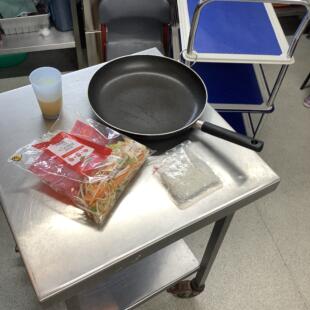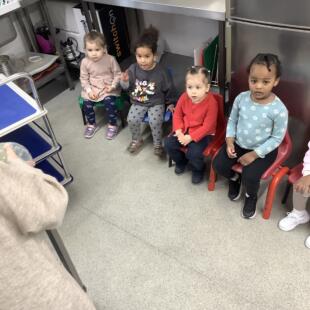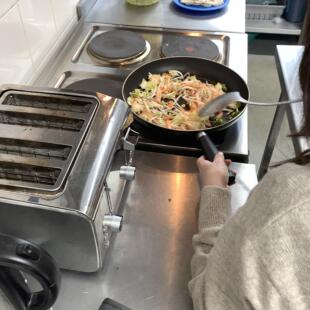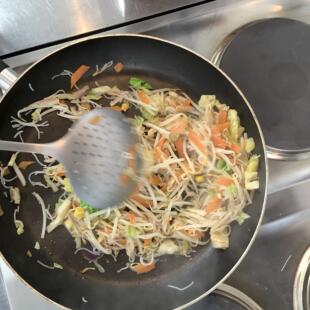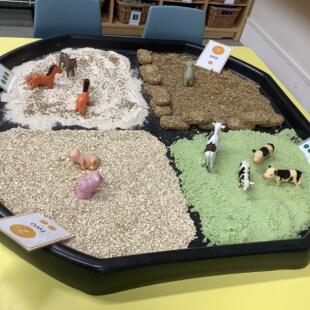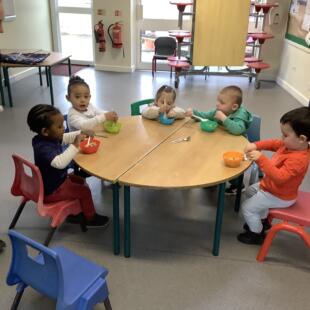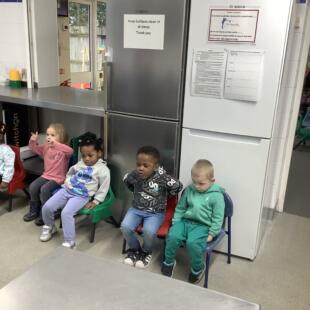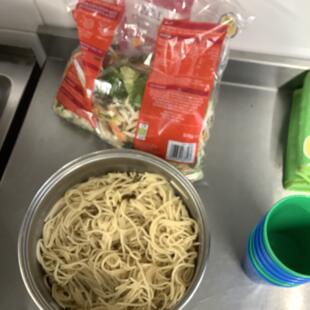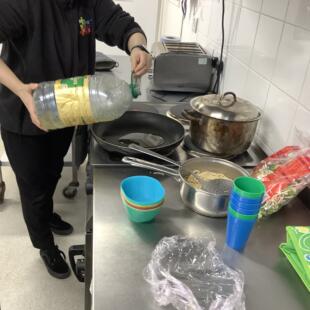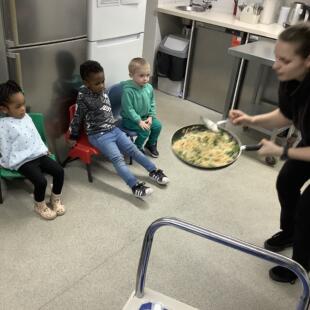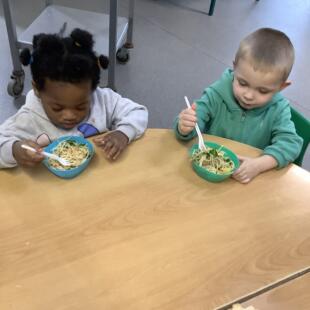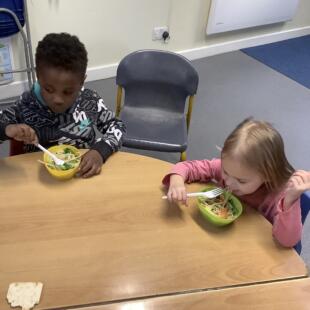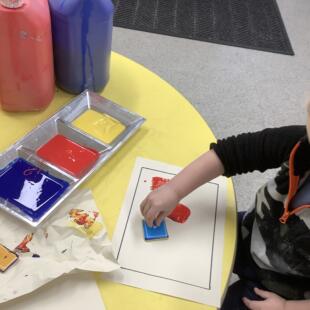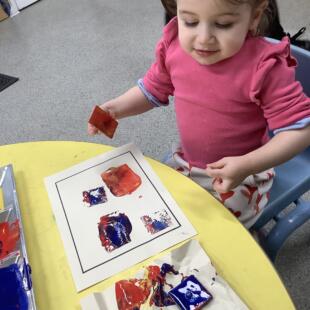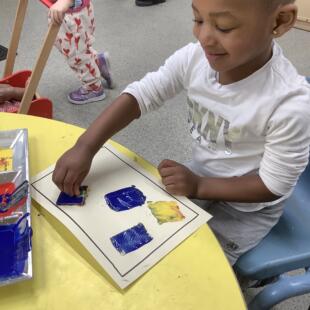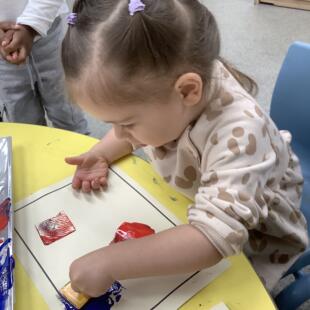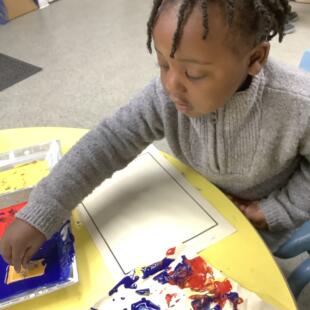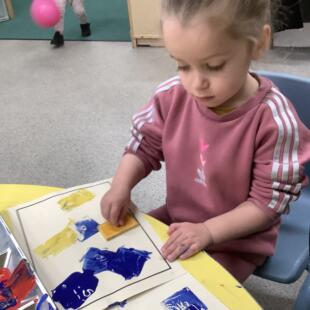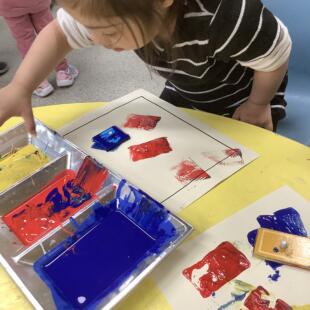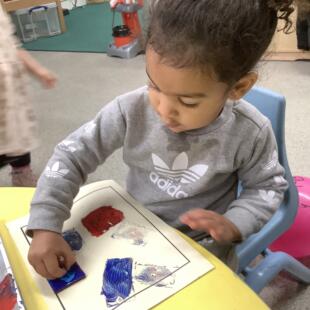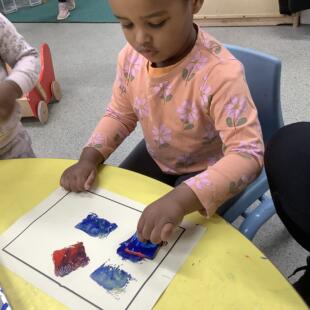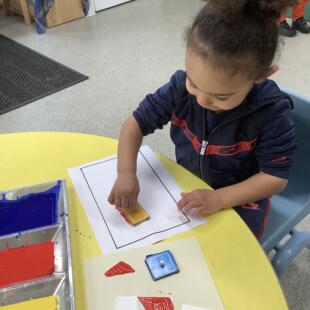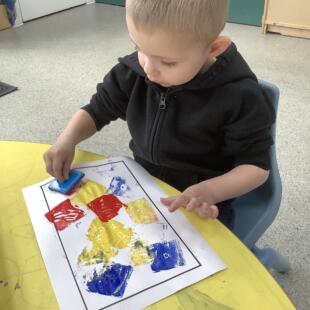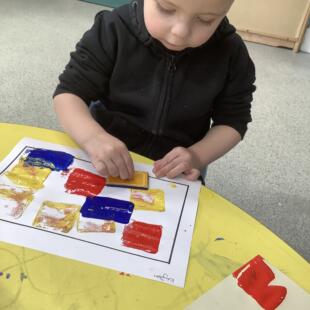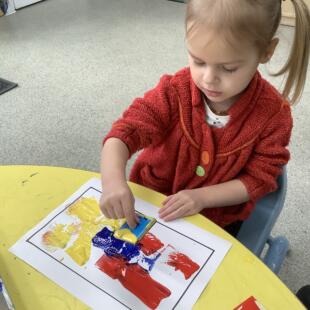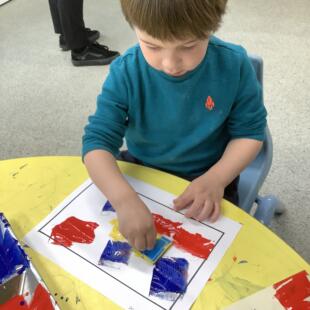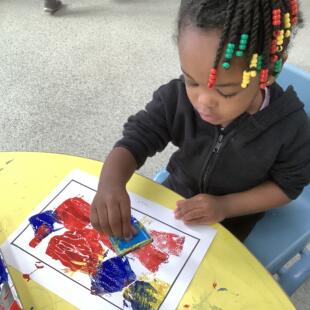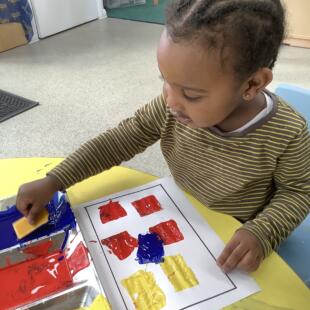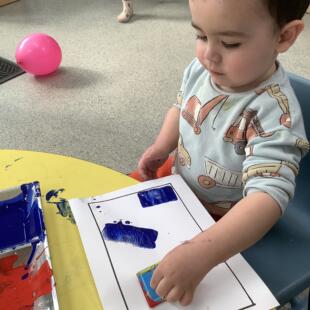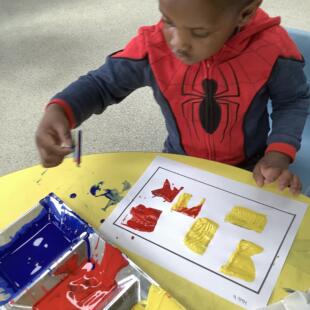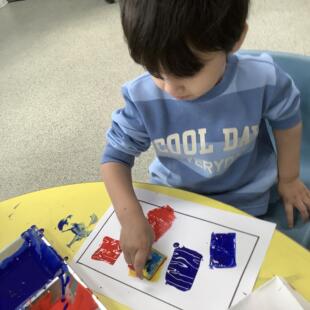This week the children have continued to do some more Mondrian pictures. The children had square and rectangle shapes, that they dipped in paint and then printed on the paper. This will produce some amazing works of art; the children have really enjoyed recreating some of Mondrian’s art work.
The children have had a cooking day this week and a vegetable stir fry was made. It was done by the adult because we had to use the hob but the children were shown what ingredients we needed to make a stir fry and they were able to listen to the sounds it made as it cooked. This gave us the opportunity to introduce some new words for the children for example, sizzle, fry, crunch and crackle. When the stir fry cooled down and was ready to eat the children had it for their snack. All the children were happy to try this but most of them did not like the taste or texture. We must always remember that sometimes we may need to adapt the recipe as some children have allergies and we don’t want them to miss out on the experience.
The sensory tray this week was a black tray with four sections, each section had a different textured food in it, oats, Weetabix, green coloured couscous and flour mixed with lentils created a farmyard. In the tray there were also farm animals and number cards. We had 1 sheep, 2 pigs ,3 horses and 4 cows and number cards 1-4. The children where asked what the number was on the card shown and to show the adults how many fingers they needed to hold up to represent the number on the card. The children were also given the cards to place next to the correct number of animals. The children really tried hard and were very excited to explore the different textures once the activity was finished. This activity has helped the children to recognise numbers and also develop their knowledge of the “value” of each number.
The children have also been learning to instantly recognise a number from a familiar pattern. We used a dice and our fingers for this, the children needed to look at the dots on the dice and/or how many fingers were being held up and make a guess at how many spots / fingers there were without counting. We will be doing this until the end of term so that this can be embedded. Children need to learn to count but also recognise a number in different forms without counting.
